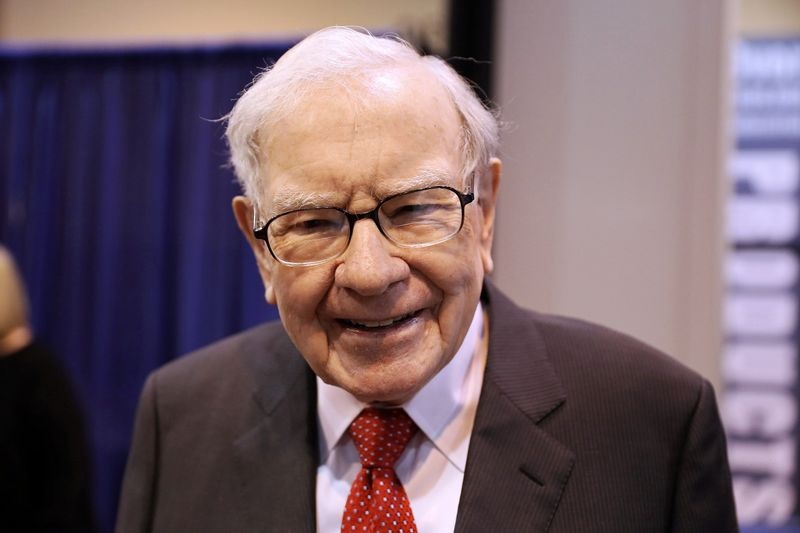
© Reuters
By Daniel Shvartsman
Investing.com – Berkshire Hathaway’s conglomerate status means that each earnings report provides read-throughs to the broader economy. That played out in their Q1 report, which showed strong business performance – though only .3% growth in after-tax operating earnings – but also many mentions of inflation, supply chain issues, consumer strength, renewed business activity, and, judging by the company’s increased equity portfolio, optimism over at least some stocks.
Here are highlights from Berkshire’s (NYSE:) (NYSE:) 10-Q:
Insurance: GEICO Headwinds from Used Car Inflation
GEICO struggled with claims severity in Q1, as its losses and loss adjustment expenses soared 32.2%. Used car price inflation and supply chain shortage were the primary causes, leading the famed auto insurer to post a pre-tax loss of $178 million, a reverse from Q1 2021’s $1.02 billion pre-tax gain. Claim frequency went up as well, perhaps tied into the pick-up in economic and consumer activity as the pandemic eases. The rest of the insurance segment saw improved profits, mostly from improved expenses and losses in the property/casualty business.
Railroads: Getting Ahead of The Inflation Curve
Berkshire’s railroad business, Burlington Northern Santa Fe, meanwhile benefited from inflation, with the unit’s pre-tax earnings growing 9% to $1.8B. Revenue and earnings grew even as freight volumes declined 3.3% on the whole. Again, supply chain challenges weighed on volume, with the main exception being coal shipping, where BNSF’s volume spiked 13.6%. Despite that variability, revenue grew in each segment as BNSF charged higher rates per railroad car and a fuel surcharge on top of that. Those rate surcharges and hikes more than made up for what was a 56% year over year increase in fuel cost for BNSF.
Residential Construction Still “Relatively” Strong
The housing sector was the major driver in Berkshire’s manufacturing segment, with building products growing pre-tax earnings 48.6%. Residential home construction demand fueled the growth even beyond supply chain issues (issues which “necessitated sales price increases”), though the 10-Q made note that rising interest rates could slow demand.
The industrial products part of Berkshire’s manufacturing segment grew pre-tax earnings 6.5%, with Precision Castparts benefiting from an uptick in flying and aviation-related demand, and higher metals prices boosted Marmon’s earnings. Consumer products saw revenues grow 17% but pre-tax earnings drop 11.5%, as Duracell and Berkshire’s apparel and footwear businesses (Fruit of the Loom, H.H. Brown Shoe Group) saw earnings drop 50%, due to, “significant increases in raw material, freight, labor and other operating costs and the impact of reduced sales volumes.”
The service and retailing business lines grew pre-tax earnings 22 and 18% respectively, with aviation fueling growth in NetJets and FlightSafety, while Berkshire Hathaway Automotive benefited auto inflation to power that segment.
A Net Stock Buyer (Both Other Companies And Its Own Shares)
Lastly, on the investment front, Berkshire invested a net $41.4B in equities in Q1. Chevron (NYSE:) was the headliner, as it became Berkshire’s 4th biggest position (after Apple (NASDAQ:), Bank of America (NYSE:), and American Express (NYSE:)). With the position disclosed as being worth $25.9B, it suggests Berkshire more than quadrupled their end of year holding in the energy giant. Berkshire also invested $7B in Occidental Petroleum (NYSE:), announced an of Alleghany Corporation (NYSE:), and disclosed a big position in HP (NYSE:) after the quarter ended. Berkshire did not appear to sell any shares in any of Apple, Bank of America, or American Express.
Berkshire bought back $3.2B of their own shares, concentrated in the B shares. They paid an average price of $470,408 for the A shares and $317.55 for the B shares. The pace of repurchasing picked up significantly in February and March, even as shares climbed towards new heights in defiance of the broader market volatility. Shares ended the quarter at $528,921 (for the A) and $352.81 (for the B), and closed Friday, April 29th at $484,384 and $322.83, respectively.


Be the first to comment